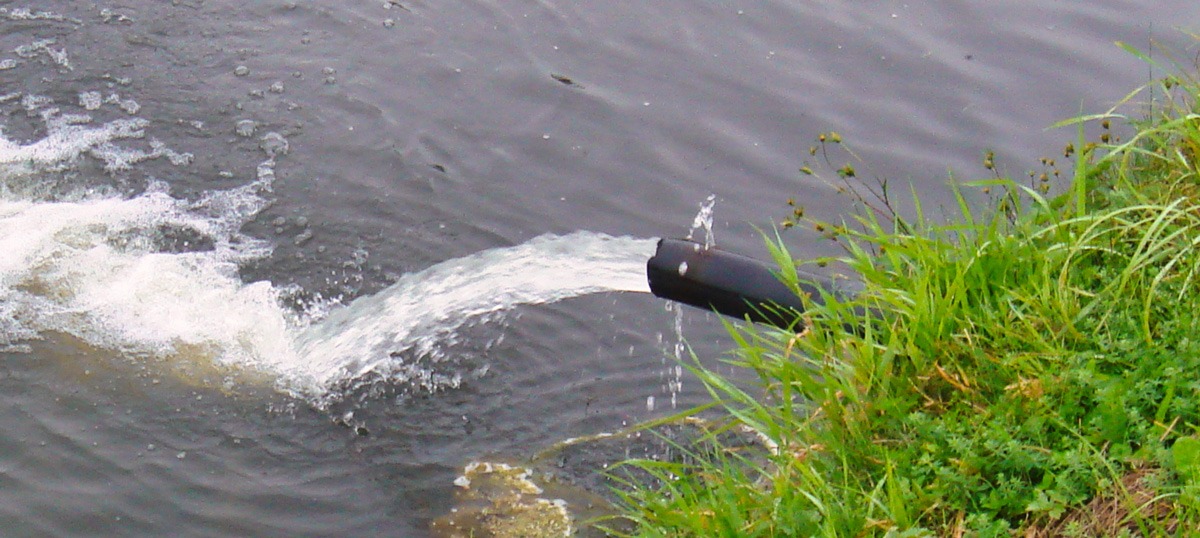Most cultivated plants are sensitive to the high content of soluble minerals (salts) in the root environment. The amount of salinity of water is a very important parameter for assessing its suitability for irrigation. Assessment of water salinity is carried out using a conductivity meter that determines the electrical conductivity of water. The higher the salinity of the water, the higher its electrical conductivity which is determined using units expressed in Simens per unit distance (e.g. mS/cm), (Table 2.). In Poland, we usually do not have a problem with too high water salinity. For most water intakes, the EC of water is below 0.75 mS/cm, which qualifies them for low or moderate salinity levels.
Table 2 Salinity classification of water used for irrigation
| Degree of salinity | EC (mS/cm) | Salinity g/l NaCl |
|---|---|---|
| Niski | < 0,25 | < 0,16 |
| Średni | 0,25 – 0,75 | 0,16 – 0,48 |
| Wysoki | 0,75 – 2,25 | 0,48 – 1,44 |
| Bardzo wysoki | >2,25 | >1,44 |
For most cultivated species, the natural level of water salinity in Poland does not pose any agrotechnical problem. However, the exception here may be the cultivation of orchids for which it will already be high salinity. Water with low salinity is also necessary for watering and spraying sowing and rooting of seedlings. When using high EC water for irrigation, the salinity of the substrate increases over time, which can negatively affect the quality of the plants produced. An additional difficulty is composing the right composition of the nutrient solution while maintaining the recommended salinity. This is especially a problem for farmers growing plants, sensitive to high salinity of the medium. When the available water is too saline, farmers are forced to lower the salinity of the water by admixing low EC water (such as rainwater).
In addition to moisture and temperature, the Agreus system's probes also measure soil salinity and so are very useful for monitoring this parameter in soils and growing media. If a predetermined salinity threshold is exceeded, the system immediately alerts the user. The advanced control system of the Agreus platform allows automatic dosing of pure water or water enriched with fertilizers depending on the value of the measured salinity.
Elements that can be toxic to plants in higher concentrations are primarily chlorine, sodium and boron. The resistance of individual plant species to the inflated concentration of these elements in irrigation water varies greatly. Indicative figures for limiting the use of irrigation water of different quality parameters are shown in Table 3. These figures are only indicative - they do not take into account growing conditions and the specific requirements and resistance of individual plant species. For example, water with a pH close to 7 is suitable for irrigation without restrictions, provided that we have the possibility to acidify it (for example, when growing blueberries). High nitrate content in water is also not a problem for crops that require high doses of nitrogen.

Table 3 Evaluating the quality of crop irrigation water
| Parameter | Units | No limits on use* | Small to medium usage limitation* | Great limitation of use* |
|---|---|---|---|---|
| pH | < 7,0 | 7 – 8 | > 8 | |
| EC | mS/cm | < 0,5 | 0,5 - 1,5 | > 1,5 |
| Amount of dissolved salts | mg/l | 450 | 450 - 2000 | > 2000 |
| N-NO3 | mg/l | > 5 | 5 - 30 | > 30 |
| Sodium (Na) | mg/l | < 50 | 50 - 100 | > 100 |
| Chlorine (Cl) | mg/l | < 50 | 50 - 150 | > 150 |
| Boron (B) | mg/l | < 0,5 | 0,5 - 2,0 | > 2,0 |
* - the data do not take into account the specific requirements of growing a particular plant species, for example, in the case of strawberries grown under covers, the concentration of chlorine in the water should not exceed 30 mg/l.* -dane nie uwzględniają specyficznych wymagań uprawy konkretnego gatunku roślin np. w przypadku truskawki uprawianej pod osłonami stężenie chloru w wodzie nie powinno przekraczać 30 mg/l.
Individual ions can be toxic to plant roots but can also cause damage to leaves when sprinkling is used. For example, sprinkling water with relatively low Boron content (at 1.0 mg/l) can already cause necrosis on the leaves of many plant species. Leaf damage during sprinkling can also be caused by elevated Na and Cl contents. Sodium content above 70 mg/l, or chlorine content above 100 mg/l in sprinkler water may not initially have a toxic effect on plant root systems but cause necrosis on young leaves.
